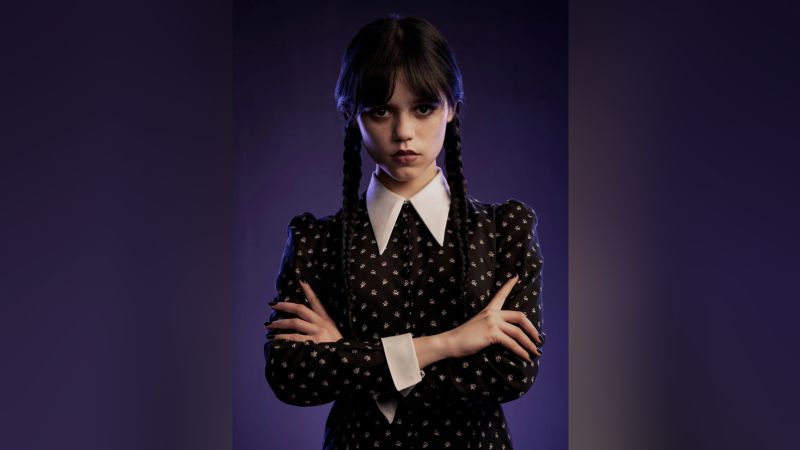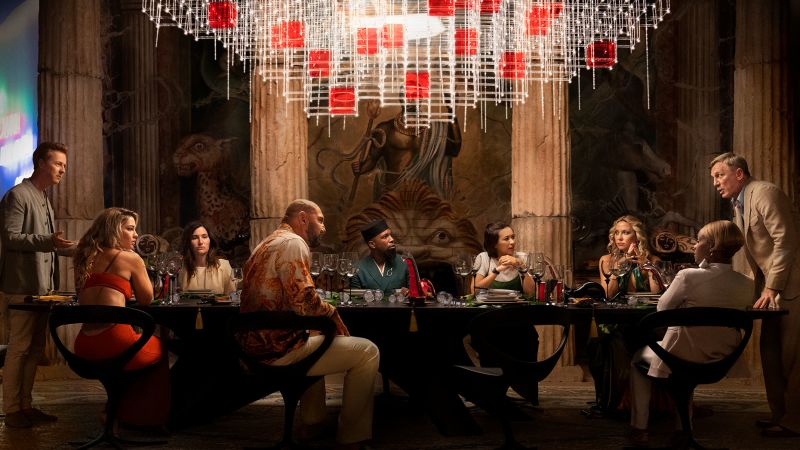That might make the revelations in a new exhibition in Madrid seem like ancient history. But “Picasso 1906: The Turning Point,” at the Reina Sofia Museum (through March 4) is one of the most engrossing Picasso exhibits I’ve ever seen.
Yes, the focus is almost perversely narrow. (Just one year in the life of this most monstrously fecund of artists?!) And no, in 1906, Picasso hadn’t yet invented (with Georges Braque) the revolutionary pictorial language known as cubism. But in 1906, Picasso was right on the cusp of the discoveries that made him singular.
Almost every celebrated artist has a period lasting perhaps a year or two when you can see things crystallize — when the artist becomes, in effect, the one we all come to recognize. Very few artists can say that the crystallization process involved the invention of a new relationship between art and reality.
Pablo Picasso did this for the first time in 1906.
From then on, of course, he never stopped inventing. But for all the pyrotechnic fascinations of his later metamorphoses, Picasso’s work was never quite as intimate, fragile and trembling with potential as it was in 1906. Everything he did that year seems to shiver and shake with a sense of its own freshness, its foreignness — like a mutant hatchling no one quite recognizes.
At first, the transformation is subtle. Nothing from 1906 looks as radical as “Les Demoiselles d’Avignon,” his painting of five hostile women in a brothel. But when you see the full scope of what Picasso achieved in 1906, it is like watching a dozen live wires being lashed together. Sparks pinwheel outward. Art is changed forever.
1906 was the year that Picasso painted his new friend and supporter, Gertrude Stein. Happily, the Metropolitan Museum of Art in New York, which owns that masterful portrait, has lent it to the Madrid exhibition. Unfortunately, that meant it couldn’t be included in “Gertrude Stein and Pablo Picasso: The Invention of Language,” an exhibition at the Musée du Luxembourg in Paris (through Jan. 28). The Paris show traces not just Stein’s influence on Picasso, and vice versa, but Stein’s longer-term impact on avant-garde art.
Stein had settled in Paris in 1903. Her studies in language and psychology under William James at Harvard had made her receptive to experimental art. She and her brother Leo, as well as Leo’s sister Sarah and Sarah’s husband, Michael, were early champions of Henri Matisse. In 1906, Matisse was unquestionably ahead of Picasso when it came to radical transformations to the art of painting. (If you want to see what was firing Picasso’s competitive impulses that year, it’s worth visiting the Metropolitan Museum of Art’s sun-drenched winter exhibition, “Vertigo of Color: Matisse, Derain and the Origins of Fauvism,” through Jan. 21).
Gertrude and Leo ran a salon on the rue de Fleurus, which some have described as the first museum of modern art. When Stein met Picasso, she thought the 24-year-old Spaniard beautiful. He was physically compact and full of energy, and his gaze was piercing. In Paris, they were both outsiders: she, a Jewish American lesbian heiress living in the 6th Arrondissement; he, a Spaniard living in bohemian Montmartre, a friend of poets and anarchists.
The company Picasso kept made him suspicious in the eyes of the French authorities. Yet another Picasso exhibition, at Gagosian in New York, hinges on Picasso’s precarious status as an expat in France. The show emerges from “A Foreigner Called Picasso,” a recent revisionist biography by Annie Cohen-Solal, who points out that Picasso was denied French citizenship on the one occasion he applied for it (1940) and claims that he lived most of his life under constant threat of deportation.
After Stein sat for her new friend (the portrait famously required several months and dozens of sittings), she began to write about him. She laced her lines with repetitions (“exact resemblance to exact resemblance the exact resemblance as exact as a resemblance, exactly as resembling,” etc.) and surprising inversions of logic. In the Paris show, it’s fascinating to see how profoundly Stein’s writing influenced such artists as Bruce Nauman, Jasper Johns, Sol LeWitt, Joseph Kosuth, Andy Warhol and Glenn Ligon.
Still, the “Picasso 1906” show in Madrid is the superior exhibition.
One thing it reveals is that Picasso’s portrait of Stein is an outlier. Stein is clothed, whereas most of the figures Picasso depicted in 1906 were nude. He had been drawing and painting nudes since the turn of the century, using them to express melancholy and desolation (in his popular, if maudlin, Blue Period) or to trigger erotic responses.
But in 1906, things changed. Picasso’s bodies took on a new fullness and vitality. His girlfriend, Fernande Olivier, had changed her name (from Amélie Lang) after escaping an abusive relationship with another man. She and Picasso were intensely in love. In the summer, before he finished his portrait of Stein, the two lovers went to Gósol, a small village in the Pyrenees inhabited by smugglers.
The mountain air and the escape from the competitive claustrophobia of Paris seemed to liberate Picasso. He worked incredibly hard, constantly driving toward a new simplicity of outline and pumping volume into the emaciated figures of his Blue Period.
There is a palpable sensuality in the work Picasso made in Gósol. But it doesn’t feel lascivious. Rather, it is tender and curious. Picasso’s every line carves out new kinds of softness, as he seeks a new, probing relationship with reality.
At the same time, it harks back to something simpler, nobler, less constrained by convention. Other avant-garde artists, recoiling from industrialization and a sense of civilizational corruption, had been thinking along similar lines for a while. Various Arcadian visions emerged: Van Gogh went to Arles, Gauguin to Tahiti. Seurat tried to harmonize science and nature. Matisse painted “The Joy of Life.”
But Picasso’s pictures from 1906 can make those others look fussy and calculated. His pictures are raw, delicate, incomplete. They evoke the quiet uncoiling of a hidden force rather than anything triumphant or finished.
One of Picasso’s key works from 1906 is “Nude with Joined Hands,” a large painting Stein came to own and from which she never parted. Picasso started it in Gósol and finished it back in Paris. It shows a young woman with tan-colored skin against a rich pink background. Although the contours are clear, there are few firm outlines. The brushstrokes are soft and pillowy. The model’s shoulders are sloping, her breasts small and devoid of nipples. The weight of the woman’s body falls on one leg as she seems to step forward, clasping her hands in front of her sex.
Her face, with its pinhole eyes and rudimentary modeling, reveals the recent influence on Picasso of ancient Iberian sculptures and Romanesque carvings. Picasso, like Matisse, had also become fascinated by wooden statuettes and masks from Africa. Examples of all these are included in the Madrid show.
Seeing them all side by side, it becomes clear that Picasso was not just trying to digest miscellaneous inspirations. He was beginning to value transformation as an end in itself. The stylistic characteristics of one source were interchangeable with another. Olivier’s face could be made to look like Picasso’s, the innkeeper Josep Fondevila’s like an African mask, and so on.
The implications were profound. What if visual styles and symbols were as arbitrary as language? What if you suddenly exchanged one kind of description for another? Would meaning simply collapse? Or would new kinds of meaning emerge?
In 1906, Picasso began to explore these questions, which also interested Stein, with unprecedented creative ferocity. When he returned to Paris, he quickly reworked his portrait of Stein, painting in a masklike face with simplified, sculptural faceting and asymmetrical eyes, then promptly declared the portrait done.
Then, as he worked on “Les Demoiselles d’Avignon,” he replaced two of the nude figures’ faces with African-style masks, hoping to transform the picture, he later said, into a tool for “exorcism.” He stylized the bodies with a new kind of jagged outline that is hard to distinguish from the faceted background. Knitting together figure and ground in this way created shallow, ambiguous space, heightening effects he had seen in Cezanne and, before him, El Greco. His approach led directly into cubism.
Cubism changed everything — and not just in art. Dovetailing with new developments in science, it unleashed new perspectives on the relationship between reality and representation and on the effect observers might have on what they observed. It also fired Picasso with the Promethean conviction — not unfounded, it turns out — that he could do almost anything.
“Picasso 1906. The Turning Point” is at the Museo Nacional Centro de Arte Reina Sofía in Madrid, through March 4. museoreinasofia.es
“Gertrude Stein and Pablo Picasso: the Invention of Language” is at the Musée du Luxembourg in Paris, through Jan. 28. museeduluxembourg.fr
“A Foreigner Called Picasso” is at Gagosian, West 21st Street, in New York, through Feb. 10. gagosian.com



